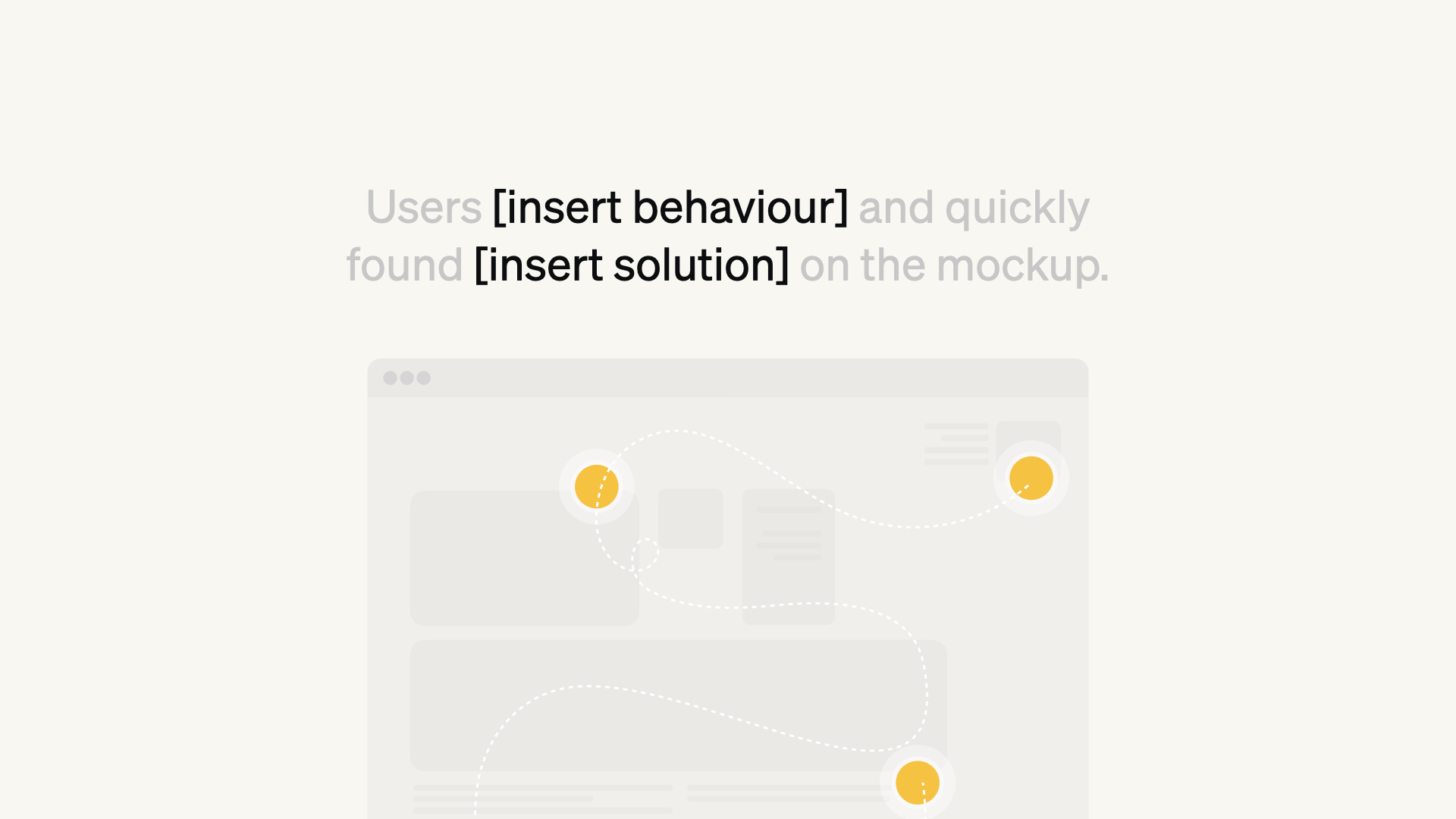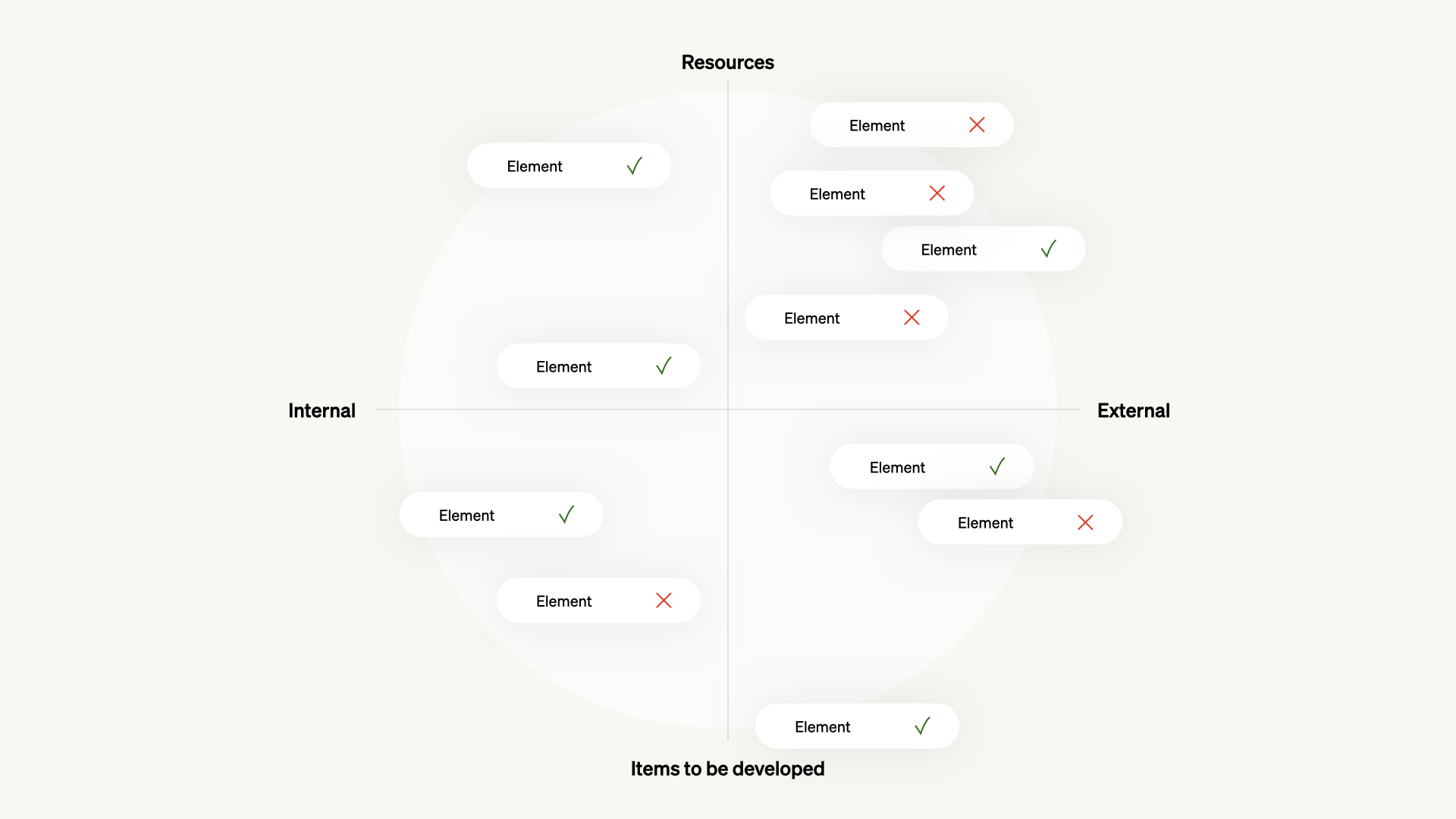Key takeaways
As a corporate innovator, you’re most likely familiar with the concept of corporate venturing and its potential as a tool to accelerate growth and create new revenue streams. Having the freedom and resources to bring a promising new concept to life and scaling it into a thriving independent business is the stuff of entrepreneurial dreams. However, before you can get the ball rolling, you’re going to need internal board or stakeholder approval.
That’s where your winning corporate venture pitch comes in.
The right pitch deck can help you convey the potential of your new product or service, create engagement and get internal leadership excited enough to greenlight your project. This is no easy feat, considering that most corporate boards and stakeholders:
- Listen to pitches all the time, and won’t be easy to impress
- Are aware that new concepts like yours are a risky investment
- Like direct returns, making visionary, radical concepts harder to pitch
The trick is to create a pitch deck that can communicate complex strategic plans, technical information and research in a structured, visual and easy-to-understand way. It also has to contain the key data points your board and stakeholders will be looking for. Having successfully pitched numerous corporate ventures through the years, we’ve leveraged our insights to create this practical corporate venture pitch deck guide and template.
Our goal is to provide you with a step-by-step roadmap so you can build your own irresistible pitch deck - and hopefully get the approval you need to take your venture to the next level.
Let's kick things off with a bit of context.
What’s the purpose of a corporate venture pitch deck?
Before you get started on your new corporate venture pitch deck, it’s important to establish a clear purpose. In short:
- To convey the strength of your concept
- To gain the trust of your board or stakeholders
Most people think pitching a new concept or initiative is about creating a five-year business plan and presenting detailed financial figures on revenue, profits and cash flow. While this information is indeed imperative, gaining the trust and confidence of the people you’re presenting to is just as important. That means every fact or figure presented on your pitch deck should be thoroughly validated and backed by reliable data.
A tricky endeavour since most early-stage ventures tend to bring about more questions than answers.
The best way to get around this challenge is to put in the work beforehand, ensuring that:
- You’ve done some initial testing to validate your concept
- You’ve thoroughly analysed the results
- You’re reporting them clearly and visually in your pitch
Having positive projections that you can easily back with detailed data will go a long way in helping you create the interest and trust you need to move your venture forward.
Now let’s get started on those nine steps! Remember that the descriptions below are meant to serve as an introduction to each of the steps, with more detailed information presented in our corporate venture pitch template.
What should be included in a pitch deck?
Step 1. Clearly state the problem

If your value proposition (VP) isn’t solving a problem, meeting a need or alleviating a customer pain point - it’s probably time to re-evaluate. The more need there is for your offering, the stronger your case will be. Think of it this way: Would you rather invest in a vitamin or a painkiller?
Boards and stakeholders love offerings that solve real and present customer problems, and this is the section in your deck where you’ll describe the one you’re going to solve. Here’s a quick checklist of the points you should cover:
- Explain the problem and its opportunities.
- Describe your target audience and their size group in the market.
- Specify your customer pain points, their impact and how they will evolve in the future.
- Illustrate the strategic importance of seizing the opportunity now rather than later.
Make your narrative as story-like and relatable as possible. The more your investors can relate and understand the issue, the more likely they are to support your solution.
Step 2. Describe your solution

Having thoroughly described your problem and hopefully gotten your audience to empathise with it, it’s time to introduce the hero of the story - your solution. This is the part of the deck where you describe how customers will use your product or service and the improvements it will bring to their lives. Make sure you cover the following points in this section:
- Talk about the value your solution creates (e.g., What’s your VP?)
- Provide a solid overview of the concept, including:
- The unique selling proposition (USP)
- The key features
- Define the concept’s benefits, linking back to the pain points it alleviates
- Present your customer journey (e.g., How does the concept work?)
If there’s a place in your deck where you want to start bringing on the visuals, it’s here. Use pictures and images to bring your story to life - remember, an image can speak a thousand words.
Step 3. Demonstrate why your product is desirable

This is the part in your deck where all that tireless validation work you did beforehand is really going to pay off. It’s your chance to show the board and stakeholders how much your target audience likes and needs your product or service. Here are some of the points you should cover:
- What assumptions did you test and why
- The experiments you used, including:
- The type of experiments (e.g., smoke tests, interviews, surveys)
- How they were set up
- The number of respondents/participants you worked with
- The key insights you gathered during the process
Communicating your validation results can be a complex endeavour with all the data and numbers. Make it as clear and easy to understand as possible with charts, graphs and to-the-point conclusions.
Step 4. Show that your offering is feasible

This is the part in your pitch deck where you assure your audience that you can make the venture happen and tell them how you’re going to do it. Make sure to detail how you plan to leverage both your internal and external capabilities in all areas, including:
- Tech
- Finance
- Branding
- Customer service
Networks and partnerships also count, so don’t forget to mention them and explain how they can help elevate your efforts. On the flip side, it’s just as important to address any technical or operational gaps and provide a clear explanation of how you’re planning to overcome them.
Step 5. Show that your product is viable

Now that you’ve shown your concept is both desirable and feasible, you’re ready to talk about viability. This is the part of your deck where you show your concept is profitable by explaining your business model and how it will create revenue. Here are a few tips on how to do it:
- Use TAM SAM and SOM to visualise your market opportunity
- Show your projected three to five-year revenue
- Present any expected losses
Lastly, make sure to clearly illustrate any investments you’ll need along the way and tie them to specific growth milestones.
Step 6. Showcase your go-to-market strategy (GTM)

In this part of your pitch deck, you’ll be outlining a detailed, step-by-step plan to succeed in your new market with your new customers. It’s basically a roadmap showing your audience how you plan to conquer the market and how you plan to measure your success. Here are just a few of the questions you should cover in this section:
- How will you reach your first 100 customers?
- How will you achieve that goal (e.g. partnerships, campaigns, digital marketing, etc.)?
- Once you’re there, what’s the next milestone?
- When will you be ready to scale, and how will you do it?
Step 7. Proclaim your ‘right to win’

This is the part in your pitch where you tell your audience how your offering is different from the others in the market. In other words, what assets, unfair advantages or secret weapons will place you ahead of the competition. Here are some of the questions you should answer in this section:
- What is your current market landscape like?
- Who are your competitors?
- What gives you a competitive edge?
- How will your unfair advantage evolve in the future?
In a business landscape that is often saturated with competitors, having strong differentiating factors can help create the interest you need to move forward.
Step 8. Provide a clear roadmap for success

Now that you’ve covered most of your bases, it’s time to bring it all together to create a final strategic roadmap. The goal? To answer the question: How will we tackle development and growth in the future? Here are just some of the things you should do in this part of your pitch deck:
- Visualise each stage in your venture’s development, from start to finish
- Indicate who is involved in each stage and the roles they’ll play
- Estimate how much FTE time you’ll need for each stage
Make sure to include detailed information outlining any additional resources you might need to meet your targets at each stage of development.
Step 9. Present your ‘ask’

Now for the most important part of your pitch, the part you’ve been building up to this whole time: The ask. This is the part in your pitch deck where you tell the board and/or stakeholders what you exactly need to make your venture work, e.g. funding, resources, infrastructure, partnerships, etc.
Make your ask as clear and concise as possible, and try to formulate it in a way that gets you a straightforward, yes or no answer.
Final thoughts
Like most business processes, there is no one foolproof way to pitch a new project that will guarantee a win. Every company is different, with its own success metrics and approach to approving new ventures for development. There are, however, certain factors that are common to every successful pitch:
- A product that solves a real problem
- Straightforward, concise and visualised content
- A good story to bring it all together
- A clear ask that ties directly into milestones, growth and return on investment (ROI)
Following the steps above will ensure that you cover all your bases in a detailed structured way - enabling you to engage your audience and shape the conversation for success from the start.
If you’re thinking about pitching your own corporate venture concept in the near future be sure to check out our pitch deck template–download button below. It’s the perfect way to kick start your journey!
______
Are you a corporate entrepreneur looking pitch to your leadership? We can help you create a an irresistible pitch deck that leverages your unique assets to expand your market share, gain a competitive edge and create new revenue streams.
The proven pitch deck template.
A practical guide and template to create a winning corporate venture pitch.








